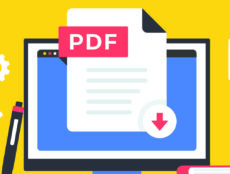
Articles
Op-Ed
Districts Must Proactively Navigate the Wild West of Free Online Tools
By Suzy Brooks
May 27, 2021
Free tools, apps and other resources aren’t totally new in education, but their popularity has skyrocketed since the beginning of the pandemic. This change sparked privacy concerns from industry and district leaders.
This apprehension isn’t totally unwarranted, as some apps and tools offered for free collect user data in the background. Other free resources – especially those outside of the education realm, such as social media platforms, can pose other security risks.
Next, important early paper on the privacy policies of Google Apps for Education, and how they “disguise the presence of a business model for online marketing and, at the same time, simulate the practices and ethics of a free public service institution.” https://t.co/paIEm5L5YU
— Ben Williamson (@BenPatrickWill) May 21, 2021
As an Instructional Technology Director, I understand that keeping tabs on every free tool, app and resource being used across the district can feel like reining in the wild west. I also know that there are many high-quality free tools that teachers and students love. My district, Mashpee Public Schools, has taken steps to better understand free offerings to better evaluate which products are safe – and those that are worth investing in.
Student Data Privacy Is Non-Negotiable
With more learning happening online, data privacy and security has become a pressing issue. Data privacy isn’t one person’s responsibility – administrators, principals, teachers and students all play an important role.
Stakeholders need to know the districtwide risk of using unverified (and often, free) tools and applications. Taking the time to vet resources is well-advised, and could save you a headache or two down the road:
-Peer reviews and testimonials: One of the best places to start is your personal network. Feedback from colleagues and other connections can be invaluable.
–What Works Clearinghouse (WWC): Maintained by the Department of Education, WWC reviews the existing research on different programs, products, practices, and policies in education.
–Common Sense Education: Provides expert advice, digital citizenship information and edtech ratings.
-EdReports: Provides reports to help educators evaluate educational materials.
–Student Data Privacy Consortium: An essential partner and hugely helpful as we learn more and more about student data privacy.
–CatchOn: Our district uses this data analytics platform, to monitor what free and paid tools are being used, and vet them for data privacy and security.
As you can see, there’s a plethora of resources available to guide the vetting process. Rely on these tools to ensure students and staff are using online tools that are safe and appropriate, both at school – and at home.
Identifying investment opportunities
When you’re aware of which products are already being used across your district, it’s much easier to field product requests from teachers and other staff members. It’s important that teachers and students are able to access the resources they need to be successful. I support that mission by looking at usage data to identify investment opportunities and advocate for new product requests from staff.
It’s important to note that the free version of a product often lacks important features, such as the ability to integrate with existing systems. By comparing and contrasting the free and paid versions of tools, it’s much easier to make the case for new purchases.
Proving ROI Is Important
It’s important that we’re able to demonstrate the value of our investments to stakeholders. When it comes to free online tools, we need to find out which versions work for the students, can be used remotely and provide clarity into student engagement. Teachers need the right tools to facilitate effective instruction, and proving the return on investment of edtech is still a priority.
Rather than providing a blind “yes” or “no” to product requests, it’s important to remain diligent in monitoring the usage of tools after they are implemented. This can help guide the decision-making process and identify which products are truly making an impact for students and teachers.
Free Is Not Always a Red Flag
There are many effective online resources that just happen to be free – CommonLit, Khan Academy, GitHub, YouTube and Smithsonian Open Access are some examples.
Our district has also directed educators and families to the GBH Distance Learning Center – a library of free, vetted resources from Massachusetts Department of Elementary and Secondary Education, the Massachusetts Department of Early Education and Care, GBY/New England Public Media and The Basics.
Offering choice can help empower teachers to use what works best in their classroom, rather than forcing something into instruction. Rather than “blacklisting” every free tool, I recommend creating a central hub or running document where teachers and students can view approved resources. For me, this is a “living document” – one that I continue to update and reference on a regular basis.
Less Surprises, More Opportunities
When you are aware of what free products are being used within your district, it’s much easier to forecast issues and make good decisions down the road. The pandemic was a good opportunity for Mashpee schools to consider how we approach the usage of free tools, and I encourage other district leaders to do the same.
Consistently monitoring the usage of online tools can help reveal trends in student engagement, identify opportunities for new investments and keep district data safe. And, with the latest round of COVID-19 relief funds on the way, now is the time to get started.
Suzy Brooks is the instructional technology director at Mashpee Public Schools in Massachusetts.
Featured Image: Nordwood Themes, Unsplash.









No Comments